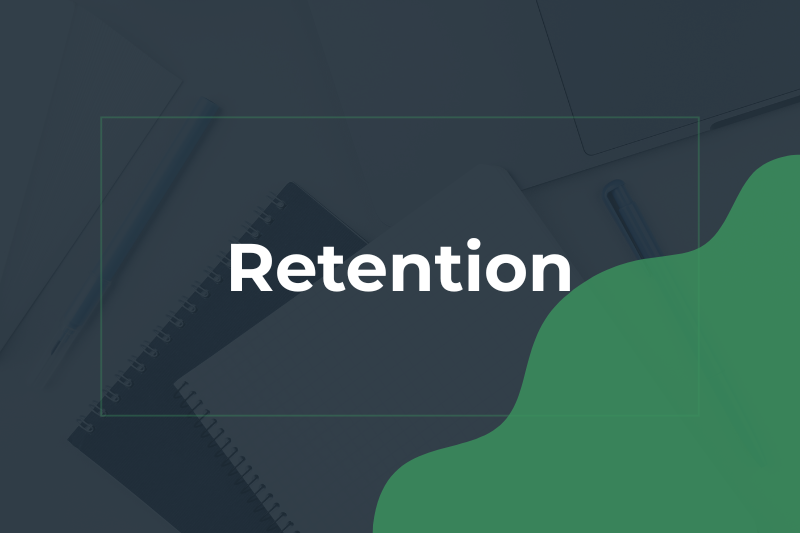There is one essential thing that can make or break the success of any website, but a lot of web admins are underutilizing it – or worse, they aren’t using it at all. That is analytics. Specifically, Google Analytics.
What makes Google Analytics so great?
Well, the first thing is free. You don’t need to pay to use this fantastic tool. Secondly, it gives you a massive amount of information about your website.
On Google Analytics, you will check how many visitors your website is getting which sources are bringing you more traffic. By using it properly, you can gather other valuable information, such as most popular pages and blog posts, conversion rates, how much time people are spending inside your website and much more.
The trouble is, it can be confusing. Tons of features seem hopelessly hidden amongst a wide variety of options, and the majority of people don’t even know they’re there, much less how to use them.
In this guide, you’re going to learn about some of the essential features of Google Analytics and how you can use those features to improve your traffic, conversions and more!
So let’s get started, shall we?
Installing Google Analytics
The first step is to set a Google Analytics account if you still don’t have one:
You can use an existing Google account. Just sign in, and you will be ready to take advantage of all those benefits from Google Analytics.
Next, you’ll need to add a site to Analytics. Here is a step-by-step guide:
https://support.google.com/analytics/answer/1008080?hl=en
Google Analytics with WordPress
If you’re using WordPress, and a significant number of sites are these days, you can use a nifty little plugin to make it easier to install Analytics on your pages. This helps a lot when using a theme that does not specify a place for Analytics code.
If your theme doesn’t, you can use plugins to install it on your website. My suggestion is the Analytics by Yoast. This plugin will connect to your Analytics account, let you choose which site you want to track, and automatically add your Analytics code to all of your posts and pages.
Take a look at the plugin here:
https://yoast.com/wordpress/plugins/google-analytics/
Google Analytics Five Report Suites
Google Analytics offers five different report suites. Each one of them provides you with another type of information.
These five different report times include:
- Real-Time
- Audience
- Acquisition
- Behavior
- Conversions
Some sites may not use all of these reports, especially if you are not selling anything directly on your website. However, it’s still super helpful in tracking conversions to your email list, for example.
Real-Time
Real-time reports allow you to see a live picture of what is happening with your site in real-time. You can find out what is happening on your website when viewing the report. This report will show how many people are navigating your website now and which pages they are presently viewing.
Audience
The audience reports provide you with legacy information about your website visitors. You will see their demographics such as age and gender, interests, location, what type of devices and browser they use, etc.
Acquisition
These reports will show how your website acquires traffic and where your visitors are coming from. This report shows you what kind of keywords users are searching to find your website and from which sources/links they are coming. This will help you determine your most effective keywords and marketing channels.
Behavior
The behavior reports reflect your visitors’ navigation behavior inside your pages.
It will show you which pages people have visited, where they go after getting into your website, your page’s loading speed, etc.
This will give you a big picture of which posts or pages are trending and what you can do to make your visitors more interested in your content.
Conversions
The conversion reports, in the majority of the cases, the most important one, will show you how effective your site is at generating leads, email subscriptions or making sales if it is an e-commerce or any other action you’d like your visitors to take.
Those are the five different types of reports and what kind of information you can get from each one.
Ideally, you’ll be using each of these different types of reports to take full advantage of the power offered by Google Analytics.
You can learn about increasing your traffic and conversions by using these reports.
Basic Date Range Reports
Date ranges will be helpful in many instances. It will allow you to see your traffic over some time and compare it to other periods in the past to see if your traffic is growing or shrinking and how certain events affected your traffic.
By looking to the right top corner of your screen, you will be able to see the date range selector. You can set this to pretty much any date range you want to see historical data and compare your information to times in the past.
This is helpful to understand if your traffic is increasing or decreasing. You will also be able to check when you have had spikes in traffic, which is a fantastic way to figure out what may have contributed to those peaks, etc.
You can also compare data easily by selecting “Compare to” to choose two different periods to get a comparison that will show you other lines to let you compare historical data.
Just tick the “Compare to” box after clicking your date range and select the period you want to compare it to.
Note: You can do this viewing a single site OR an overview of your entire account to give you a snapshot of how all your sites are doing.
Looking to the bottom part of your chart, you can add notes. This will help you add notes to remind you what happened on specific dates in the future.
For example, you can take notes like:
- Ran Facebook ad, traffic up 28%
- Launched new website
- Added article on Pinterest, traffic doubled overnight
- Site hacked, traffic dropped by 75% for several days
Not only will this help you figure out what kind of marketing and such is working, but if you sell your site later, you’ll be able to remember what happened at various times to explain traffic discrepancies to potential buyers.
Date ranges make it easy to understand how your traffic grows or shrinks. Be sure to remember to add those annotations to significant traffic events so you remember what caused them.
Goals
In my opinion, Goals are one of the most important and valuable functions of Analytics and are highly underused in most cases. Many people don’t even know goals exist in Analytics, and others know little about them or don’t know how to use them.
Goals can be constructive. It allows you to track how effective is your lead generation, your ads campaigns, and even your sales funnel.
Here’s how goals work:
- Visitors get to your website.
- You have a particular action you want people to take, download a material, request a quote or give you a phone call.
- Users take that action
- Goals will track how many people took the action
To set up a goal:
- Open Analytics and go to Admin at the top of the page.
- Click Goals on the left-hand menu.
- Select New Goal, then select Custom.
- Click Next Step.
Choose a name for your goal. It can be whatever you want, but be sure it will be easy for you to remember what you’re tracking with it.
For example, you might name it something like “Squeeze Page For Weight Loss Report,” for example.
You can track a wide variety of events:
- Destination: User ends up at a specific page
- Duration: User is on-page for a particular length of time
- Page/Screens per session: User views at least X number of pages
- Event: User watches a video, click on a specific part of your website, etc.
For Example: Let’s say your goal is to make users request a quote. You’d choose an event goal, then set your value to your product thank you page.
If you’d like more detailed information about setting up all the different types of goals, here is an in-depth tutorial from Analytics:
https://support.google.com/analytics/answer/1032415?hl=en
Practical Uses for Google Analytics
There are so many uses for Analytics that it would be impossible to name all of them in a short guide, but we’re going to look at some of the best ways you can use Analytics to increase your traffic.
Identifying Successful Content
Analytics is great for determining which pages your visitors are landing on most. Not only that, but it will also tell you where they go NEXT. This is useful for finding out which content is most effective at pulling in traffic to write more content along the same lines.
Identifying your key content is essential because you will be able to decide:
- What style of content your audience is engaging.
- What kind of content isn’t working, so you don’t waste time on it.
- Which topics your visitors are most interested in.
- Which pages you should work on to boost their search rankings.
Getting More Search Engine Traffic
Everyone wants more traffic from search engines, but it can be hard to figure out where to concentrate your efforts without analytics. With the information from Analytics, you can design a strategy to increase your SEO and attract more visitors.
The acquisition reports will provide you with the most information you need.
Go to:
Acquisition > Search Engine Optimization > Queries.
You’ll discover the keywords people use to find your site. It will show you which position your pages are ranking and how many clicks you get when they see your page on Google.
Here are some ways to use Google Analytics to optimize your website to get more free visitors from search engines:
- Identify successful and unsuccessful content.
- Gather which keywords visitors are searching to find your site
- Discover the keywords you’re ranking close to page one on searches. With that, you can rework the content to the first page.
- Find out which pages are most popular so you can send more people to them.
- See the highest CTR keywords in search results to revamp articles to get more clicks.
Which Traffic Sources Are Working Best
If you visit your dashboard and go to Acquisition > All Traffic > Source/Medium, you will find out which sites send you the most traffic. This can help you figure out where to focus your marketing efforts and what you could improve to get more traffic from other sites.
It can also let you know if too much of your traffic comes from a single source, which is dangerous. For example, if most of your traffic is coming from Google and there’s a massive update that drops your rankings, your whole site would be in serious trouble.
Conclusion
Analytics is a complex tool, but that makes it incredibly useful. It’s not one of those intuitive, at-a-glance tools that put everything right at the fingertips of the average user.
But if you take the time to delve deep into it, Analytics can help you boost your traffic, conversions, and income.
Analytics can be used to:
- Track traffic sources
- See which keywords people are using to find your site.
- Track conversion results
- Learn what content people want more of
- And much more!
Don’t be like the average Analytics user who installs it on their site and then forgets it other than maybe checking overall traffic numbers now and then. Take the time to learn the different features and use them effectively.
Trust me, and you’ll be glad you did!
Do you have something that you would like to add to this post? Get in touch here or leave me a comment.





